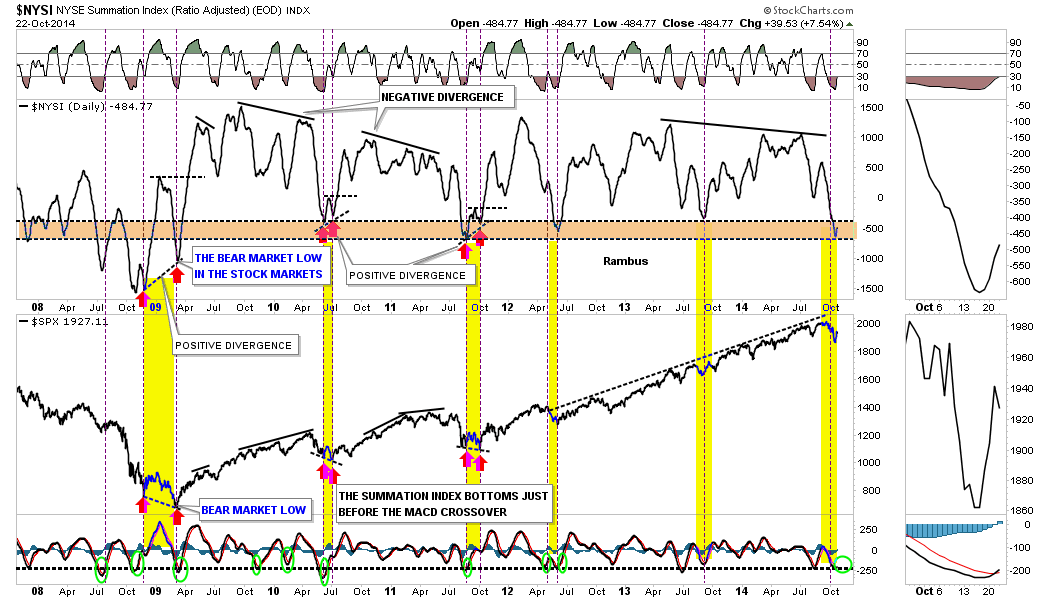CURRENCY WORLD :
Let's start this by looking at several currencies that broke out yesterday. As you know the euro has been one of the weakest currencies out there. Yesterday’s bear flag breakout confirms there is more downside to come. This first chart is a daily look showing the euro formed a H&S top in the first half of this year and broke down sharply in late July. The euro has been chopping out the blue bear flag for most of October which broke down yesterday with a breakout gap.
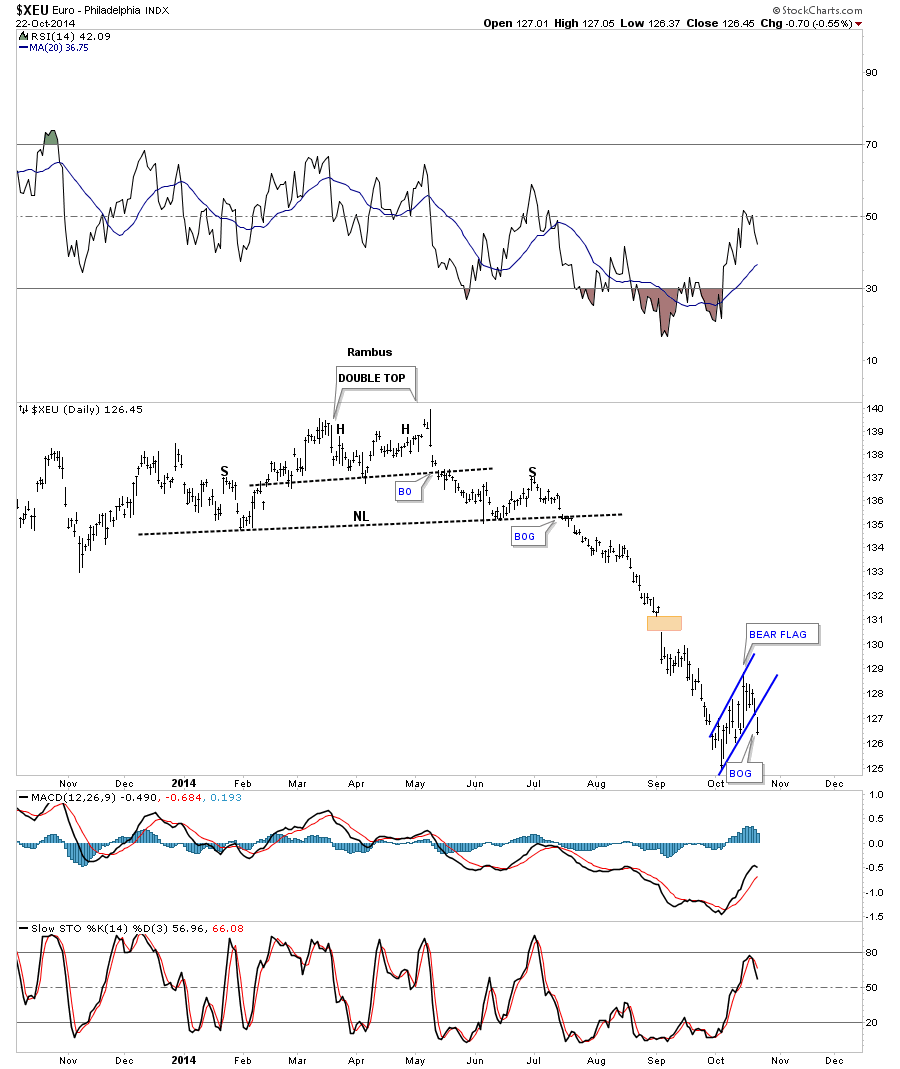
Below is a weekly chart I’ve been following very closely that shows the bear flag, on the daily chart above, was the backtest to the bottom rail of the bearish expanding rising wedge. This chart shows the second leg down is just getting started.
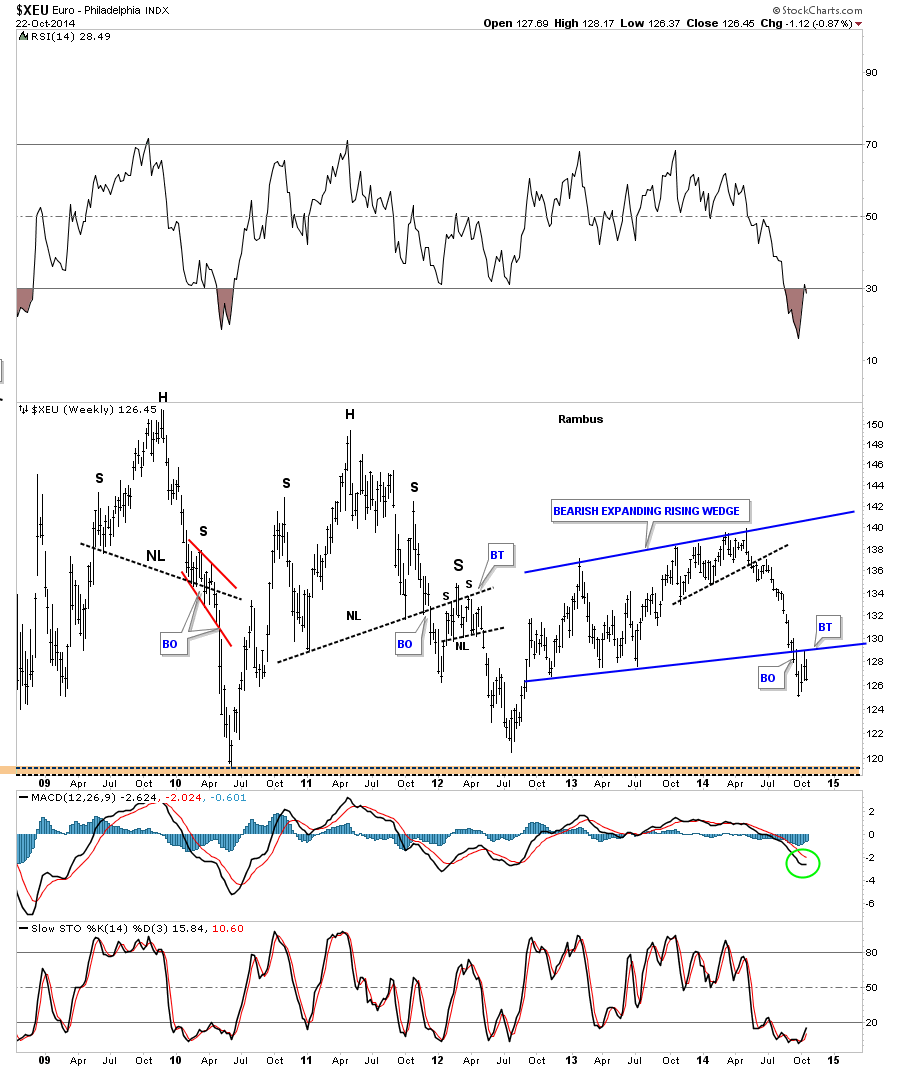
This long term, monthly chart shows the break down from the bearish rising wedge and the impulse move that has been taking place since the breakout. The euro has been locked in the downtrend channel since topping out in 2008 with no end in sight.
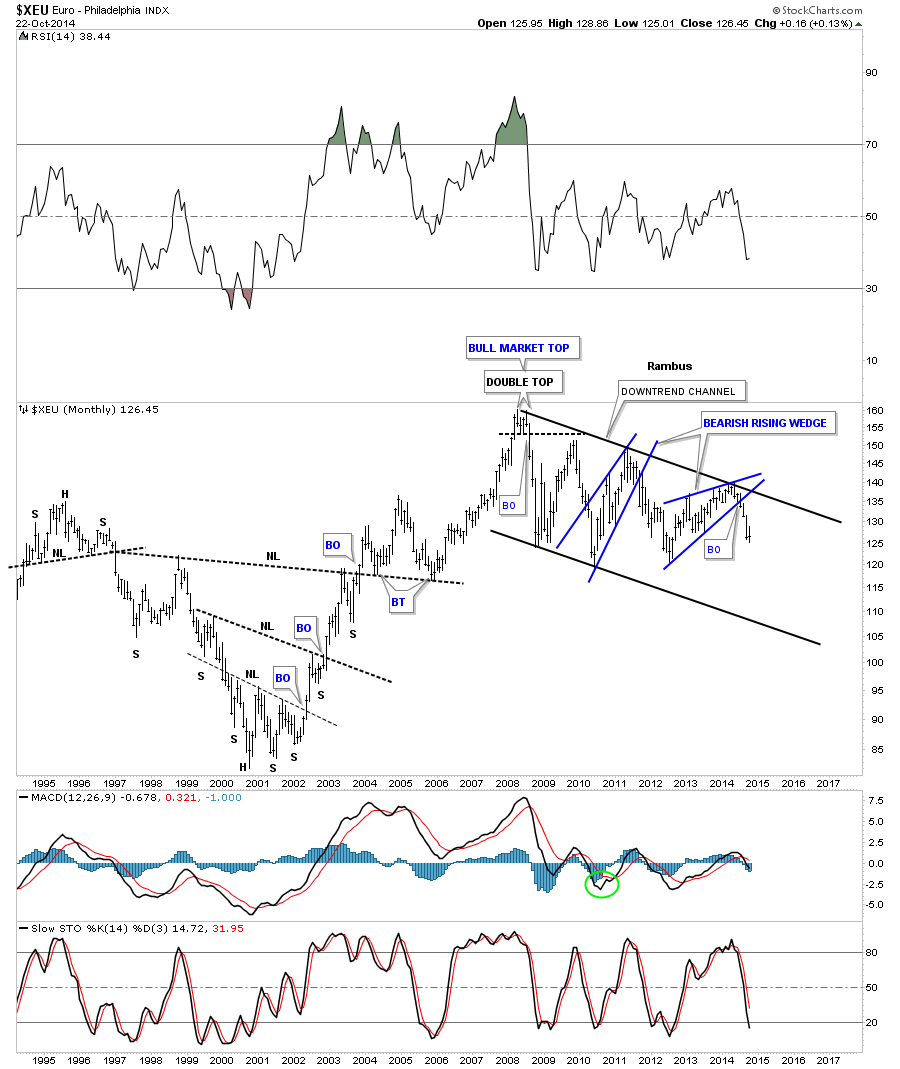
In this last euro, chart I’ve overlaid gold on top of the euro so you can see how the two can trade together at times. Sometimes they move in lockstep and other times in the opposite direction. Since August of this year, the two have been moving together fairly closely.
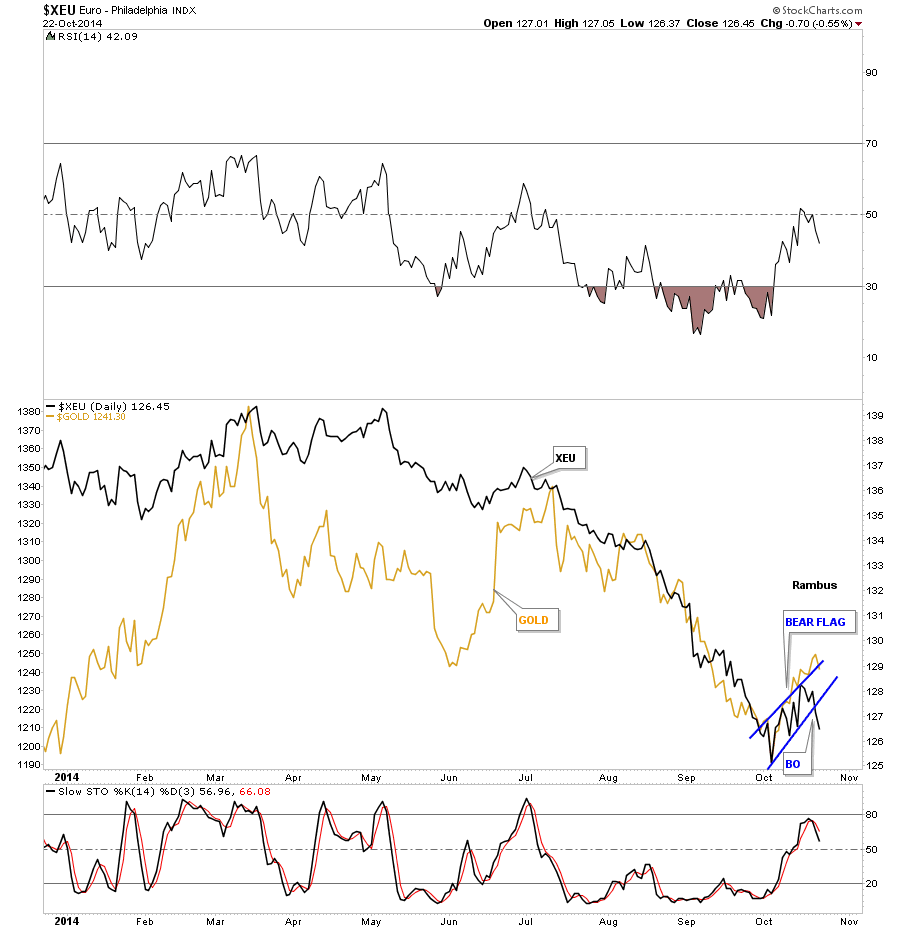
A quick update on the yen shows the backtest last week to the area of the breakout gap from the massive H&S top, green circle. So far, this is prefect Chartology. Now we need to see it break back below the bottom blue rail of the falling wedge to really get the move going to the downside, as all the work will be completed with regard to the breakout and back-testing.
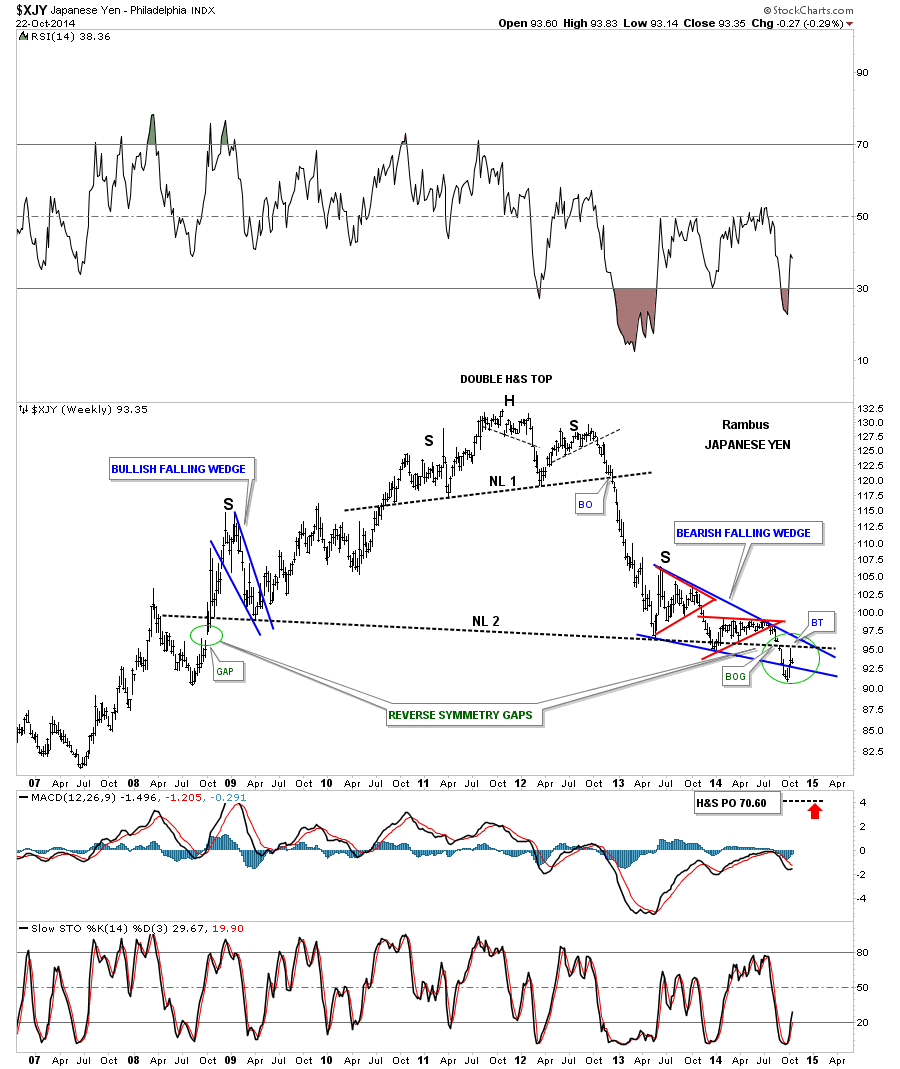
On the chart below I’ve overlaid gold on top of the yen so you can see the correlation between the two. It has been pretty strong since the middle of July, this year.
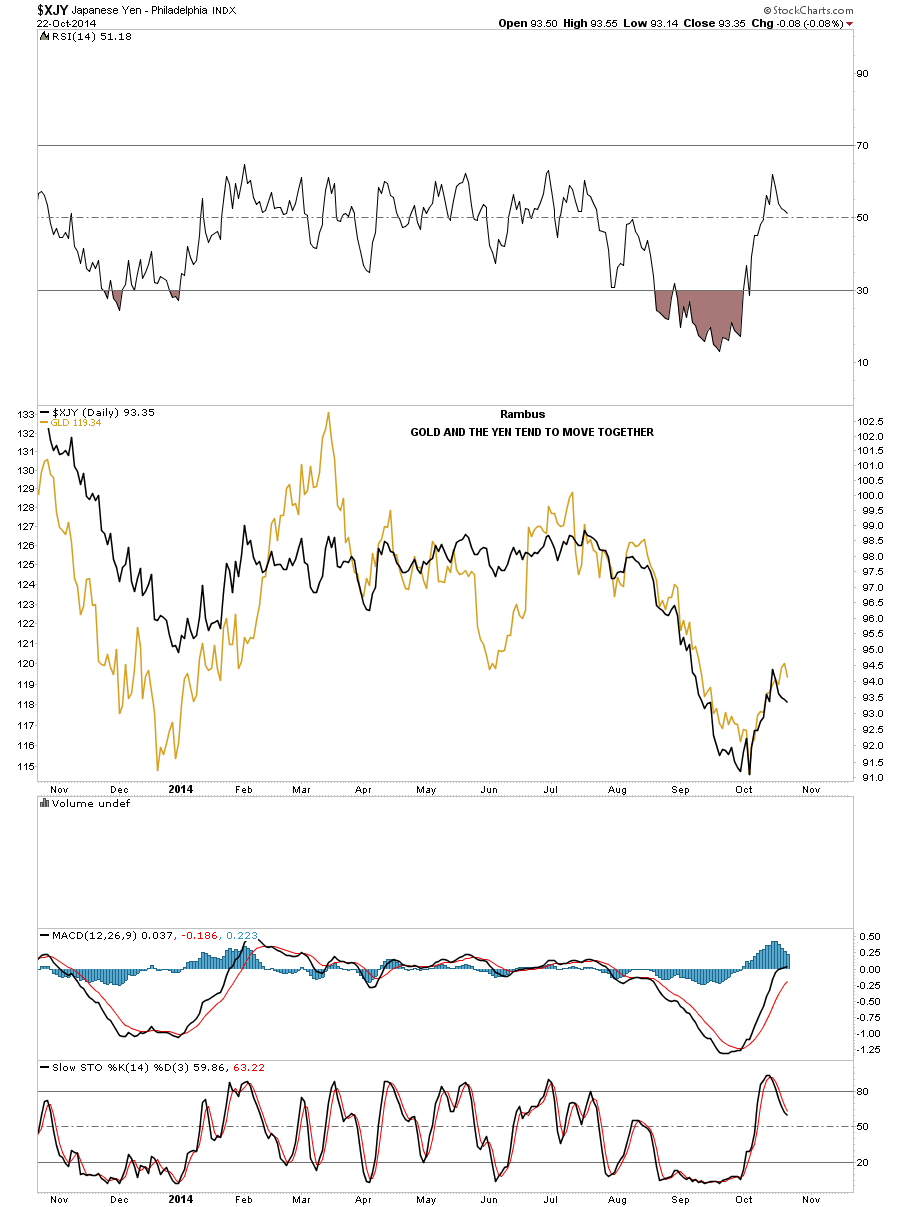
The daily chart for the US dollar shows it has formed a blue flag that is getting ready to break out. Note the little red rectangle that formed just below the brown shaded support and resistance zone. That little red rectangle gave the US dollar the extra strength to finally break out above the S&R zone. Now notice how our blue flag has been forming right on top of the brown shaded S&R zone. Again, this is perfect Chartology: resistance turns into support once it’s broken.
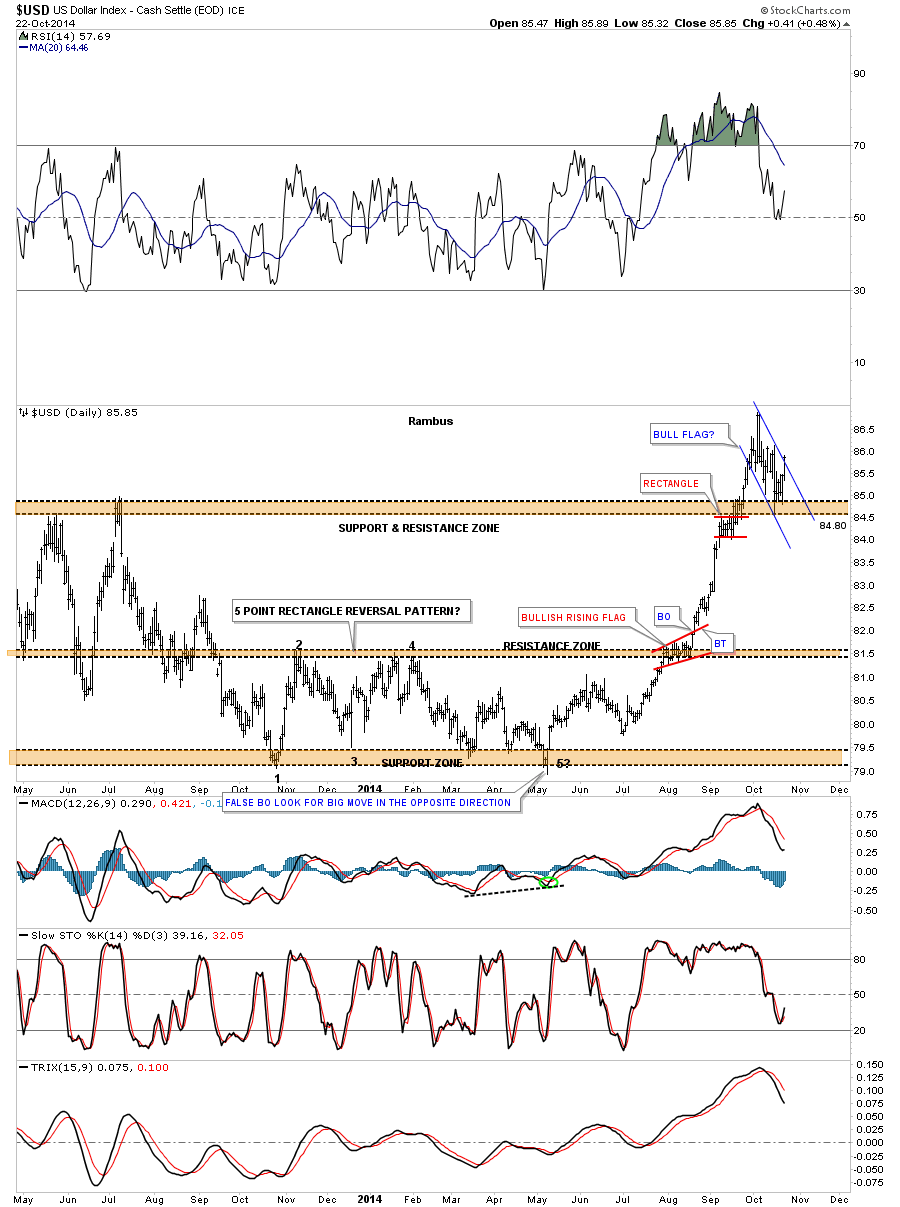
This long term weekly chart puts our brown shaded support zone into perspective. The bottom of our latest move up started with the blue 5 point rectangle reversal pattern to the upside. After reversing symmetry up, the US dollar ran into the old highs where it just plowed right on through to the topside of the brown shaded S&R zone. The backtest was the blue flag I showed you on the daily chart above.
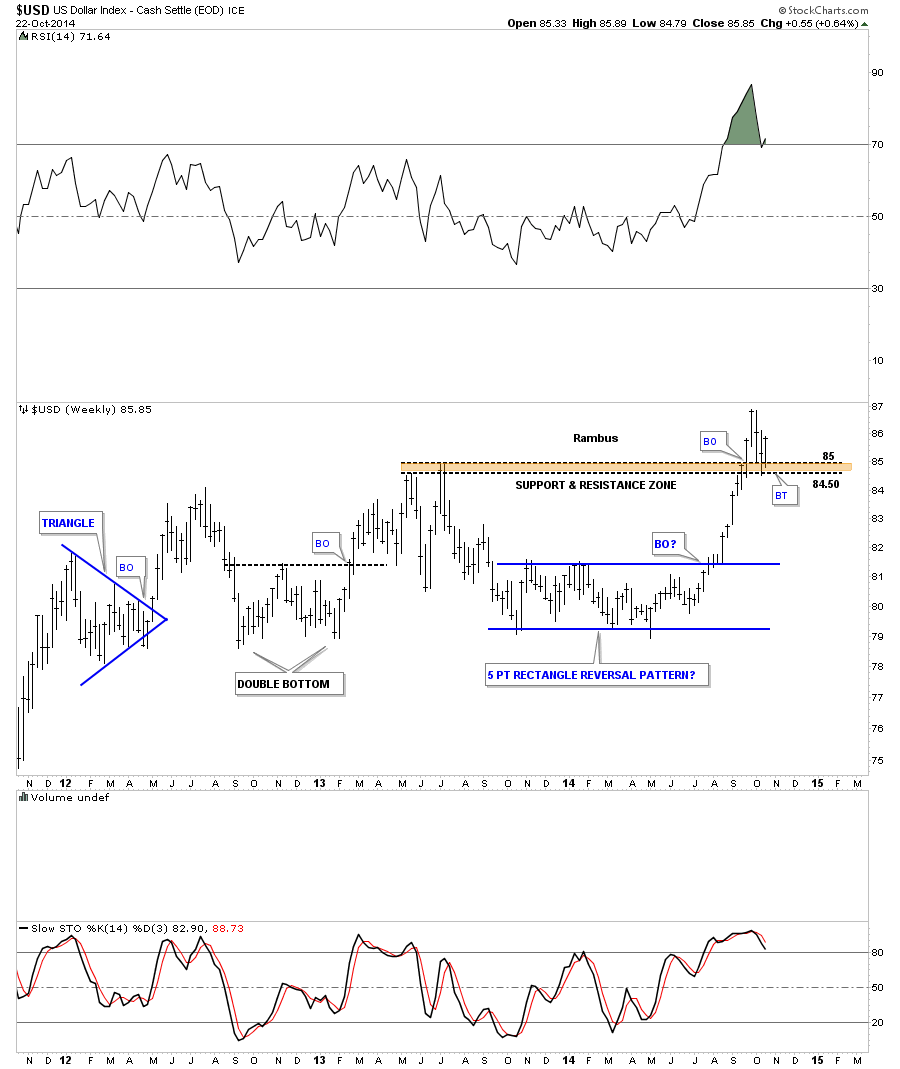
The last chart for the US dollar is a chart I’ve been showing for years on which I’ve overlaid gold on top of the US dollar. I would like to focus your attention to the right hand side of the chart which shows a thin black dashed line, one on gold and the other on the US dollar, in the area with the blue arrows.
What the blue arrows show is how gold has been acting a little frisky recently while the US dollar has been chopping out its blue flag as shown on the daily chart. The US dollar has broken above its resistance line while gold is still finding support on its support line. Once the US dollar starts to rally I believe gold will finally break below its support line which is actually a descending triangle. You can clearly see the trend has been down for gold and up for the US dollar since 2011.
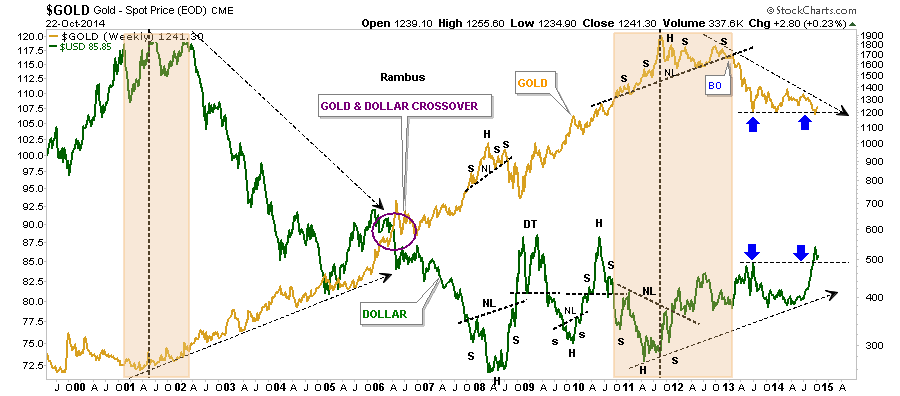
KAMIKAZI TRADE
Yesterday I bought back most of the shares I sold several weeks ago on Direxion Daily Junior Gold Miners Bear 3X Fund (NYSE:JDST). The first chart is a 2 hour look at Market Vectors Junior Gold Miners (ARCA:GDXJ) that shows the downtrend channel that has been in place since July of this year. Outside of the big rally several weeks ago, the GDXJ has made lower highs and lower lows the whole way down.
There were the three fanlines that helped to identify the downtrend. Just below fanline #3, GDXJ formed a blue rectangle that had a false breakout to the upside but quickly turned right around to trade lower, negating the false breakout. Next you can see the blue triangle that formed just below the bottom rail of the downtrend channel, which gave us one consolidation pattern above and one below, which I’ve pointed out many time is a bearish setup. As you can see, the bottom rail of the downtrend channel has held resistance since it was broken to the downside in September. Yesterday, the bottom blue triangle broke out, signaling a resumption of the impulse move lower. Confirmation will occur when GDXJ puts in a new lower low.
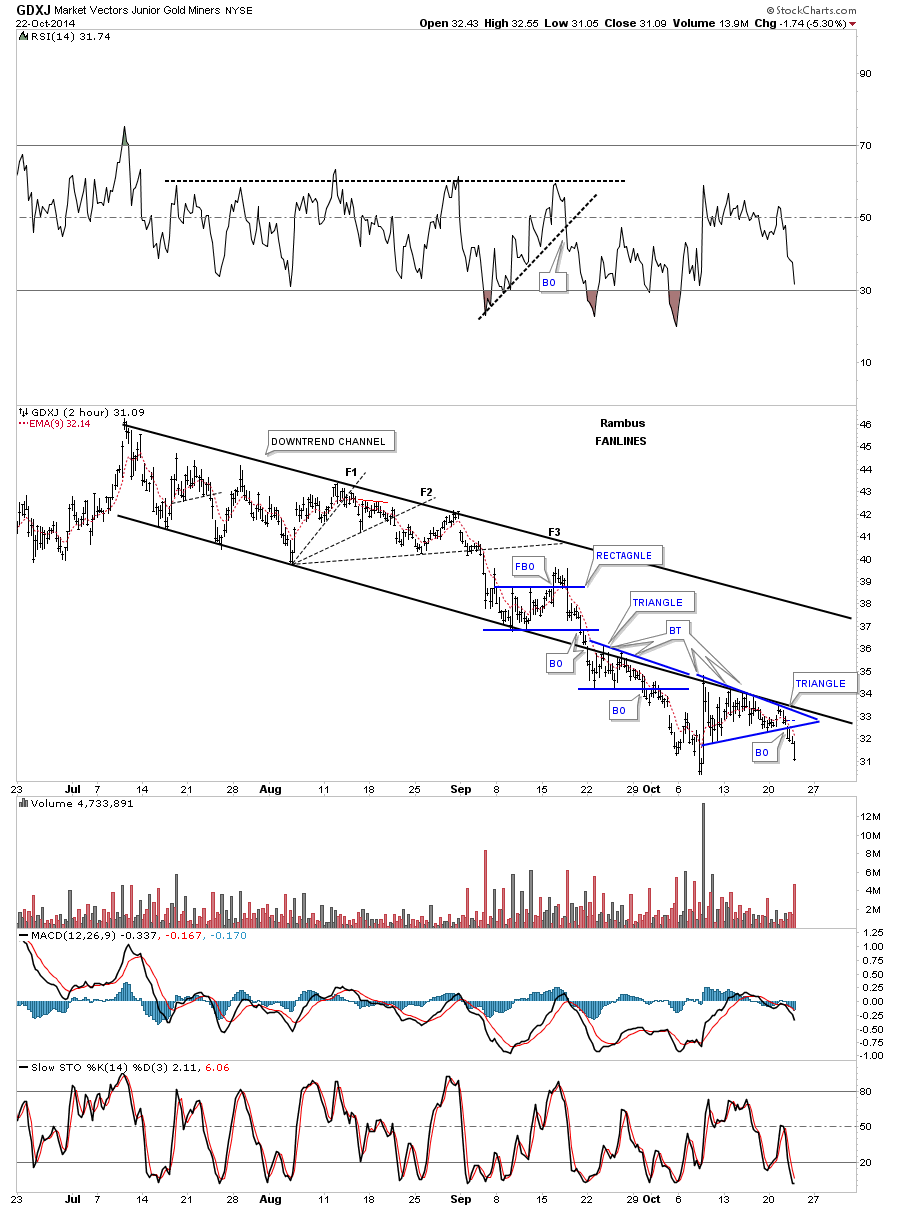
Below is a close up look, on the 30 minute chart, of the morphing blue triangle. This is the reason I bought JDST yesterday.
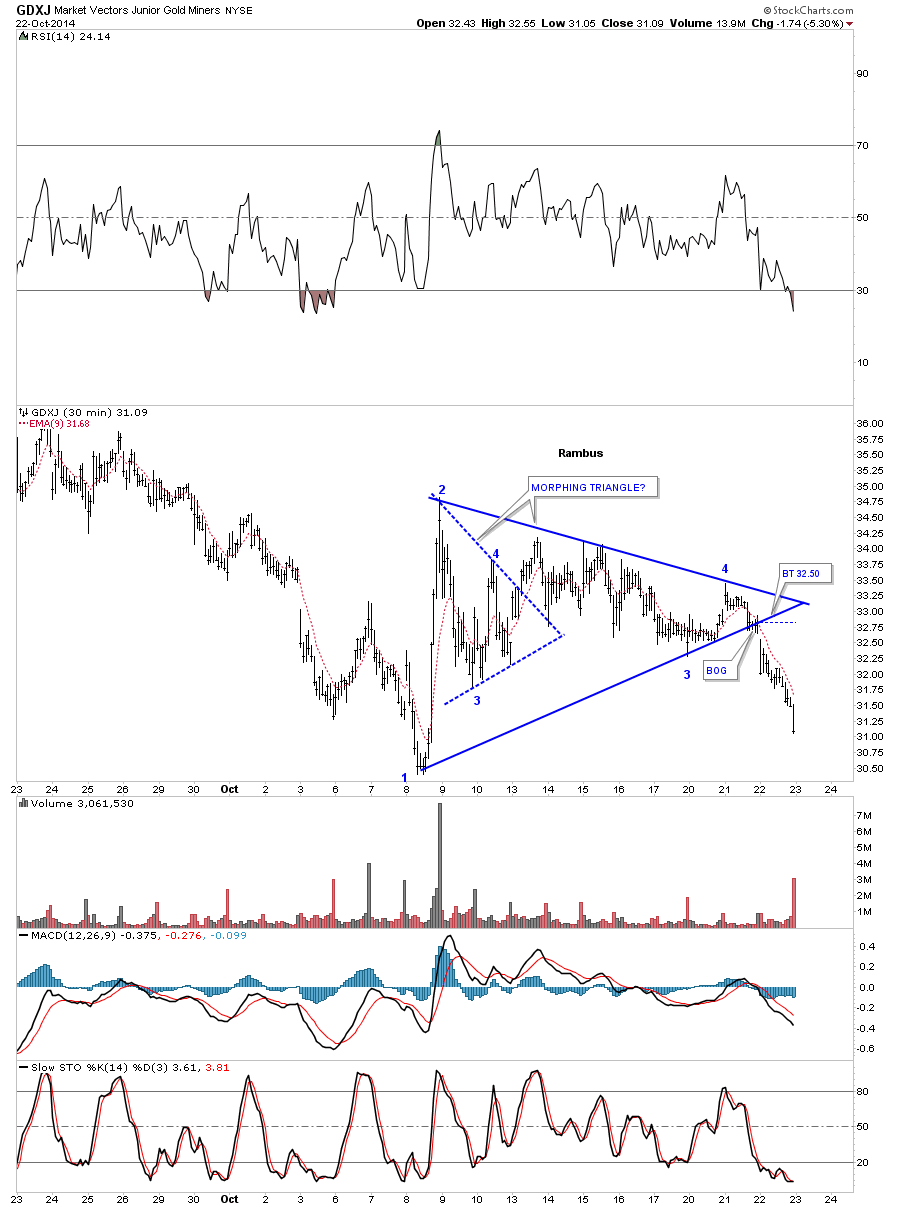
Below is another 2-hour chart, showing the downtrend channel from a different perspective. As you can see, there has been one consolidation pattern followed by another since the breakout below the brown shaded support and resistance zone.
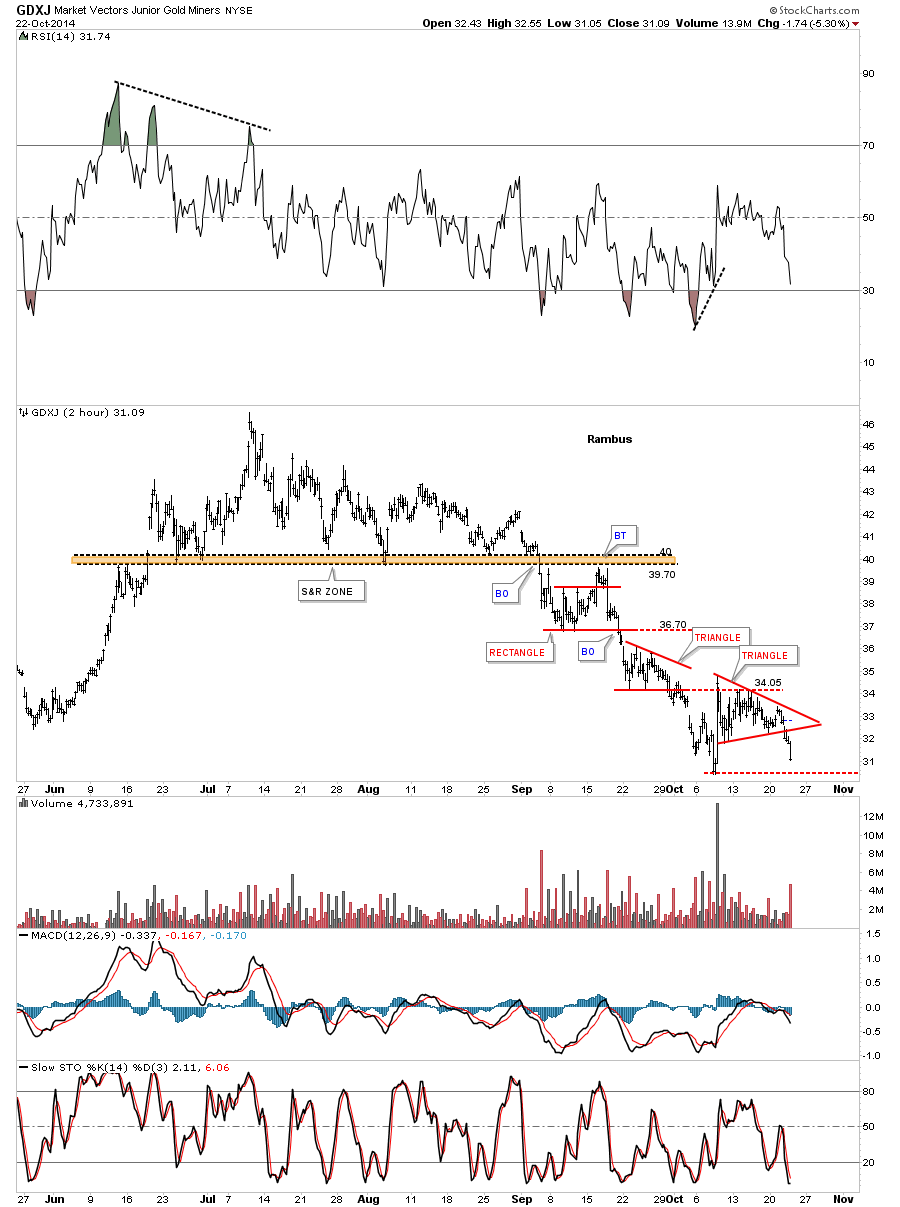
Below is a daily look for GDXJ that shows the most important chart pattern for this stock, the blue bearish rising wedge. As you can see, it hugged the bottom blue rail for about a week before gravity finally took hold and the decline began in earnest.
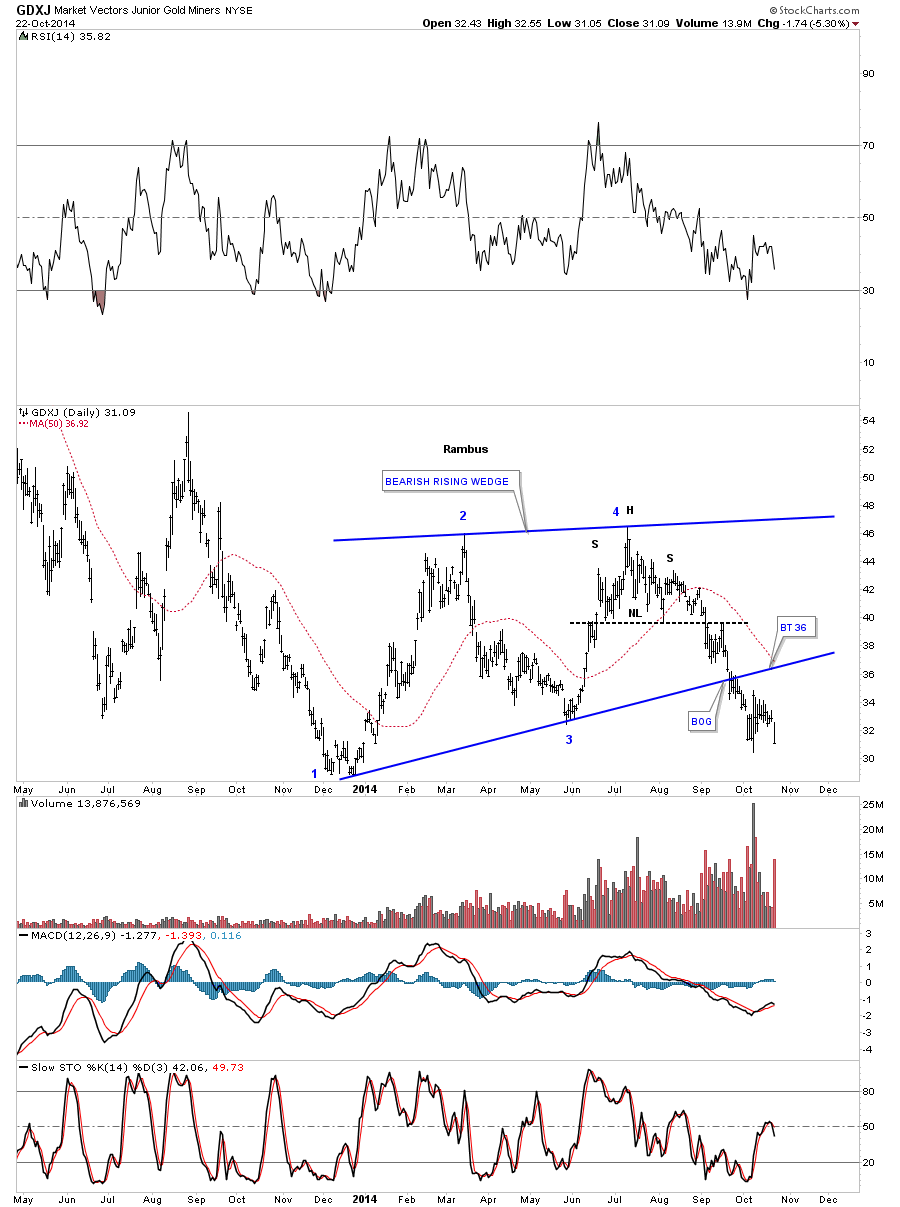
Since the rising wedge is the most import chart pattern for the GDXJ, I have to put it in perspective by looking at the weekly chart. It just doesn’t get any prettier. One can complicate things, making it much harder than what it needs to be. My advice: Keep it as simple as possible.
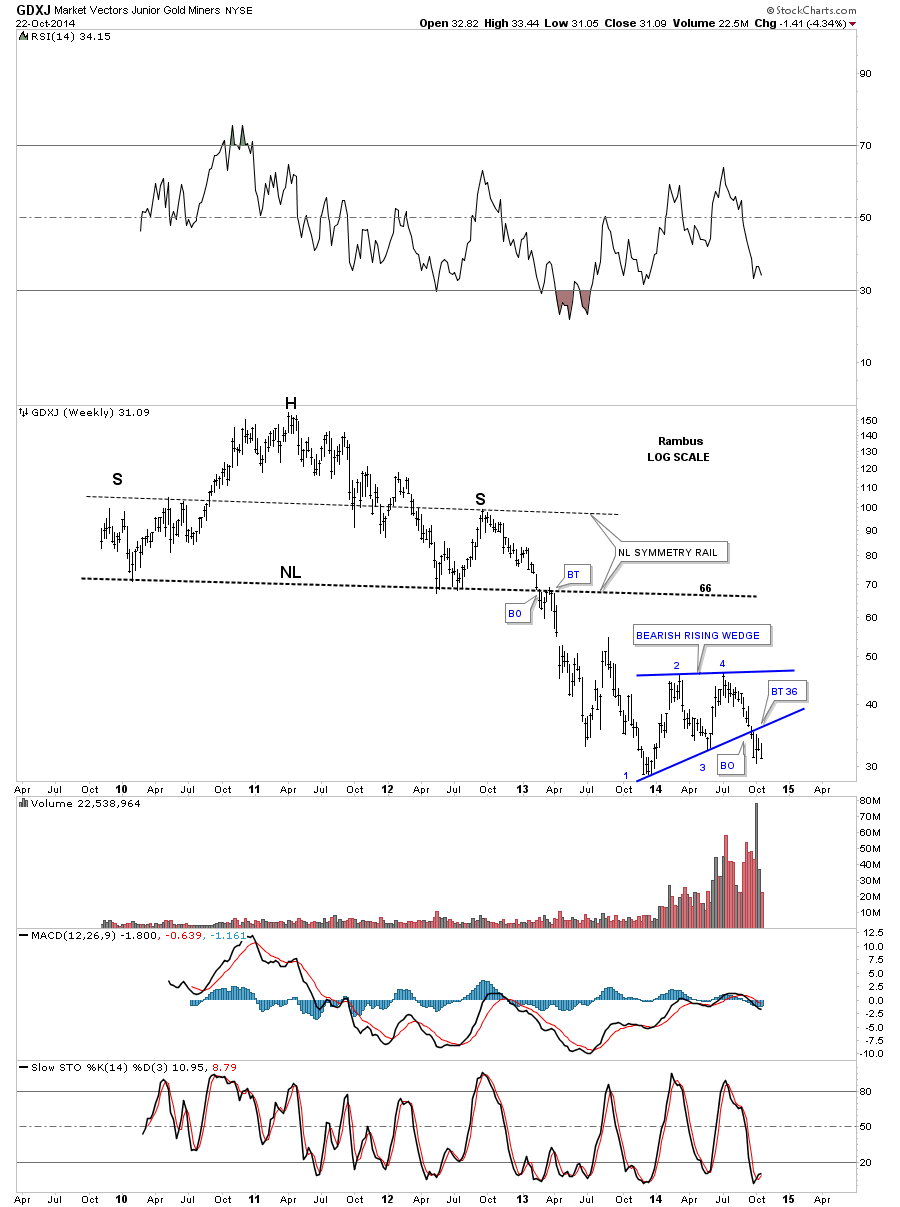
US STOCK WORLD
As you know, we’ve taken on some big positions in the different areas of the markets recently. We are now entering the toughest time, which is when you take your initial positions. No stock or market goes straight up or down. Rather, it's more like two steps forward in a bull market, and one step back. After moving 2 steps forward we are now taking our one step back, if this is just a correction in an ongoing bull market. There is no way to know for sure if we’re still in a bull market or have entered into the dreaded bear market as everyone is claiming.
Let's start with a 2 hour chart for the Dow that shows the inverse H&S bottom which broke out and now is in the process of doing the backtest—which would come in around the 16,395 area. You can see a similar inverse H&S bottom that formed at the August low which had a strong backtest but still worked out fine:
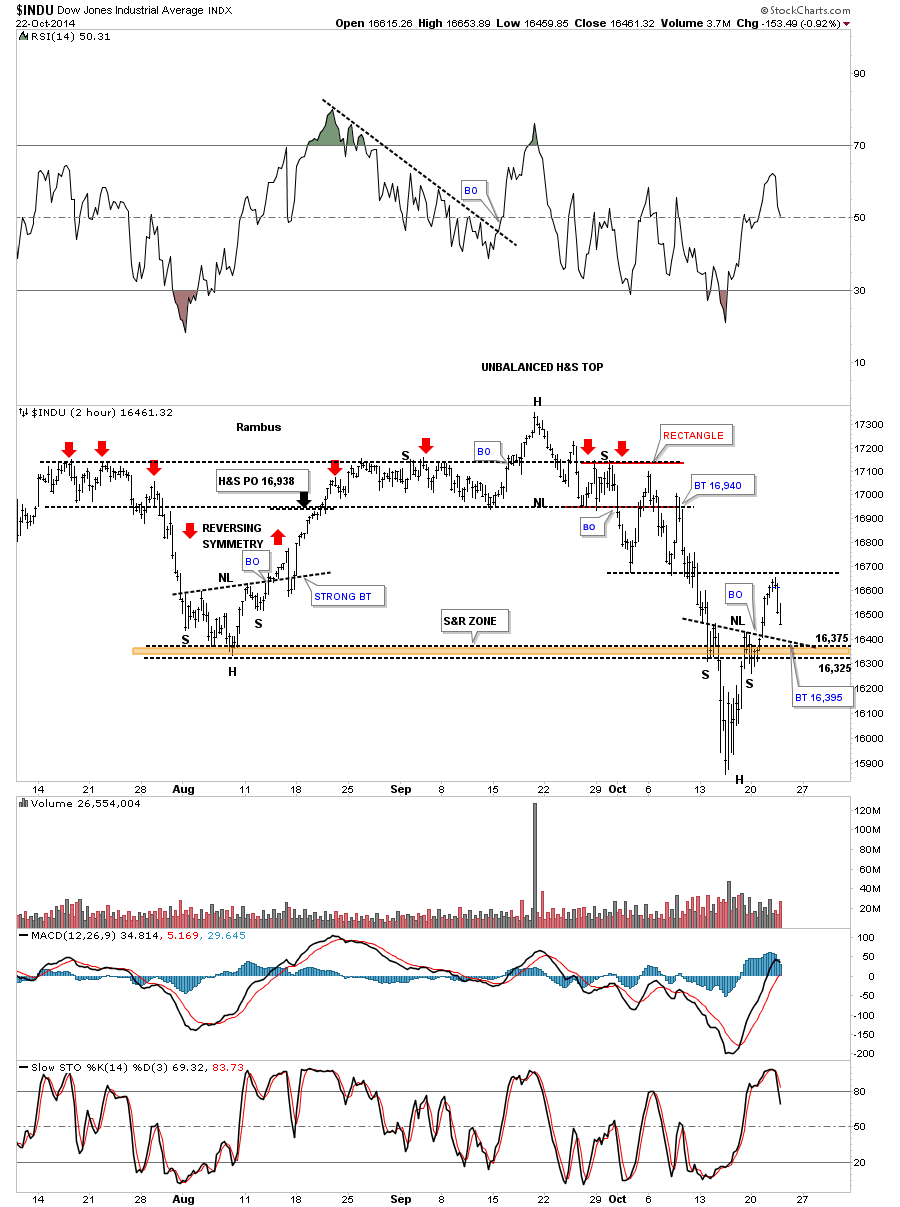
While we’re on the Dow I would like to once again show you the down-to-up volume chart that I’ve shown recently. As you can see, we’ve had 2 days where the down-to-up volume exceeded 8.5, which can be a good indication of some capitulation by the bulls. The capitulation volume doesn’t have to come at the exact bottom as you can see from previous capitulation bottoms.
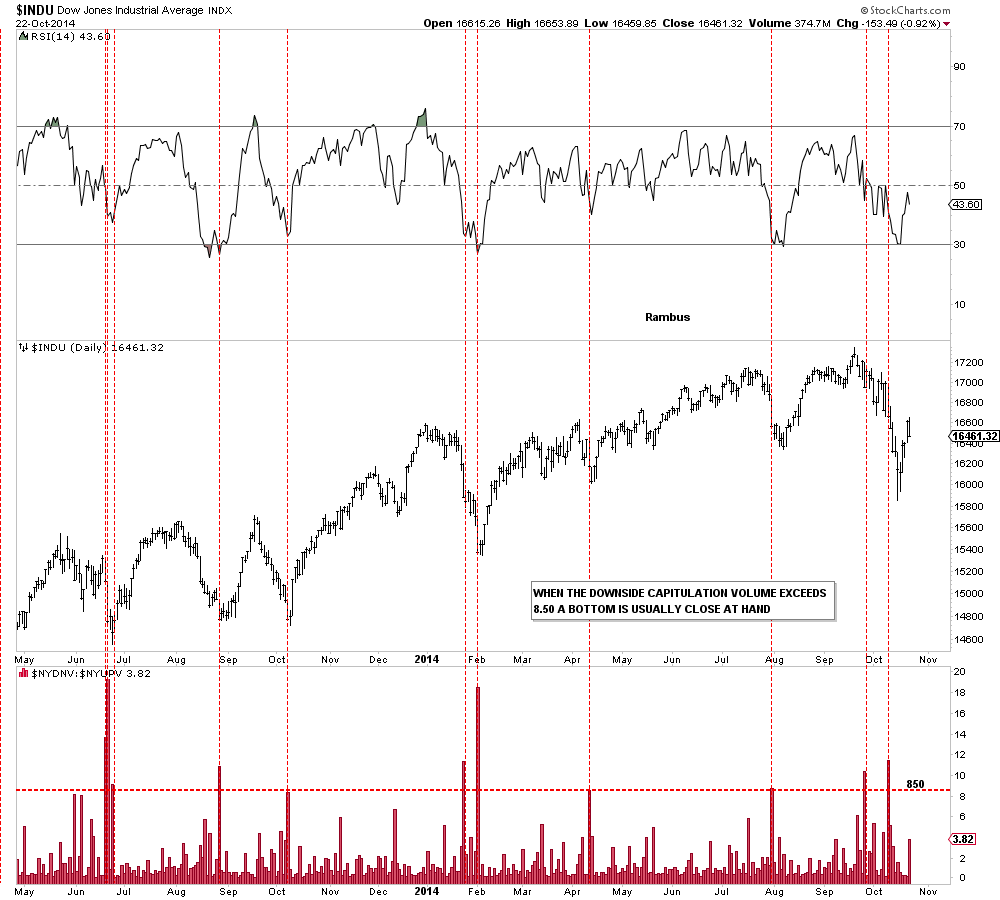
Below is a 2 hour chart for the NASDAQ 100 that shows its inverse H&S bottom. The main concern I have here is the big gap, made on the way up.
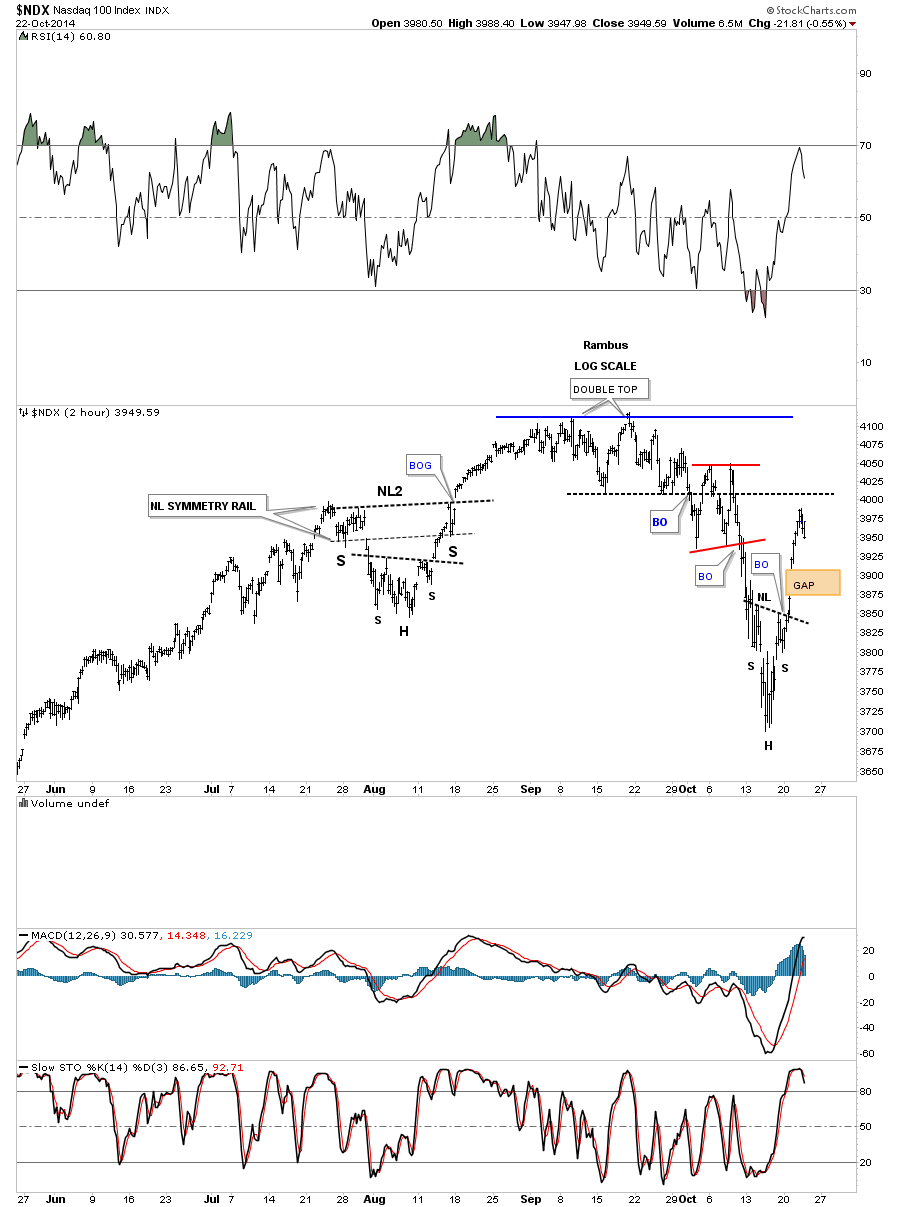
The NDX four horsemen are still positive.
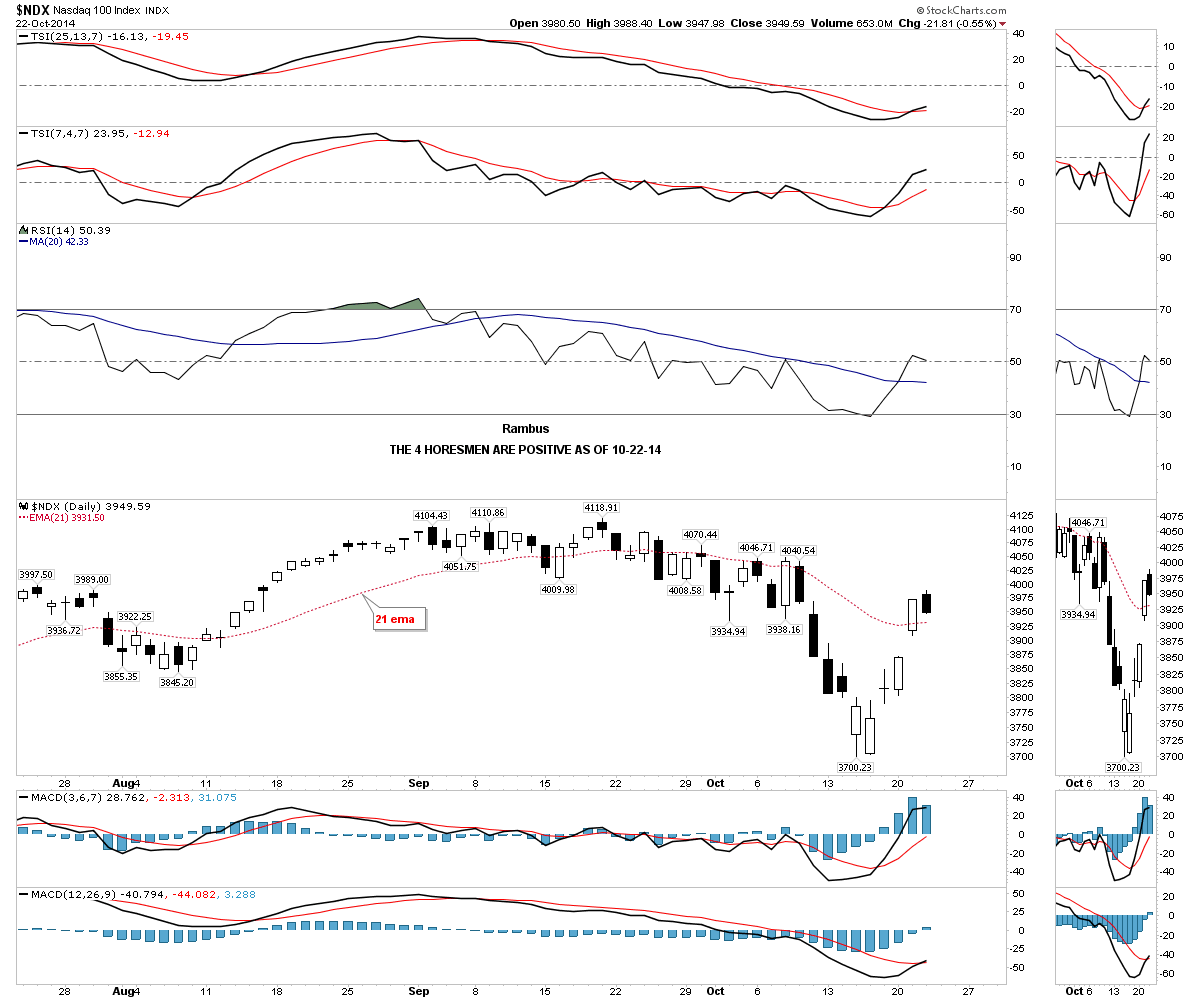
The 2 hour chart for the Russell 2000 shows it’s now backtesting the neckline. You can see the August inverse H&S bottom had a strong backtest before it began its rally. So far, nothing is broken yet. Today maybe a different story though.
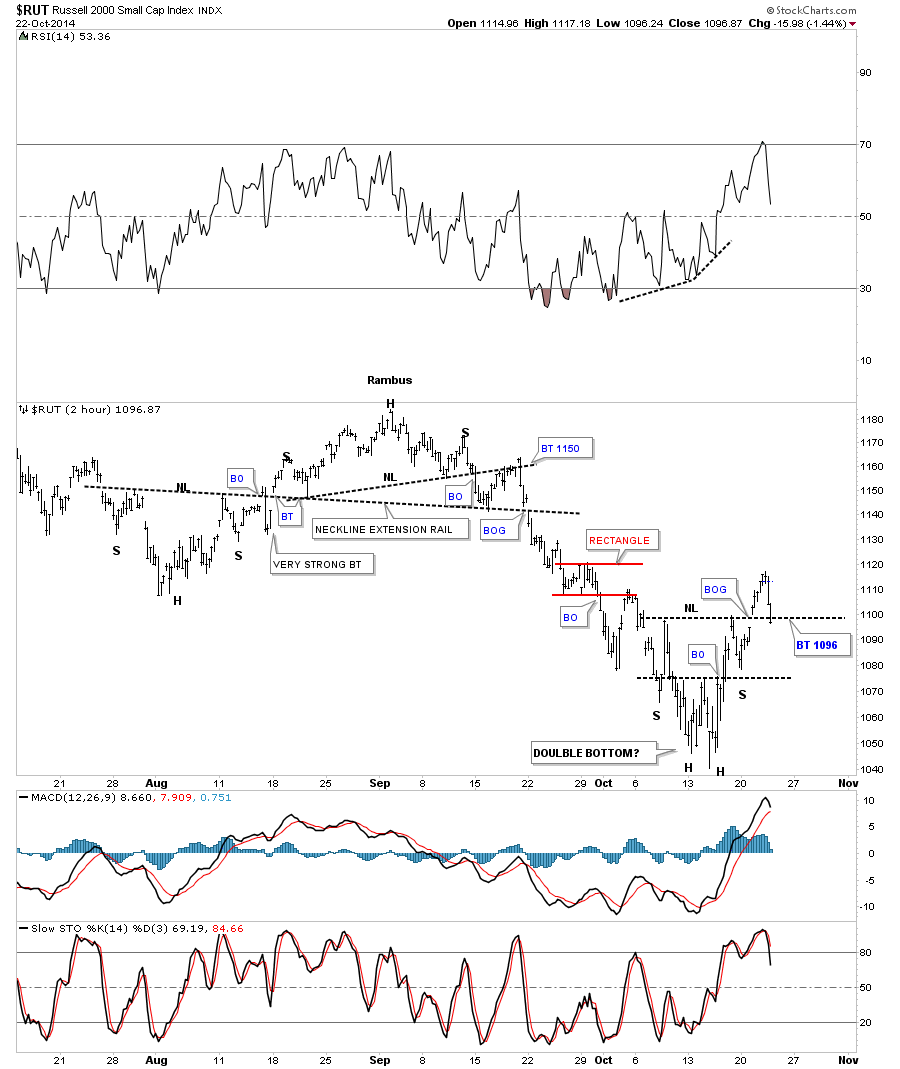
The 4 horsemen are still positive:
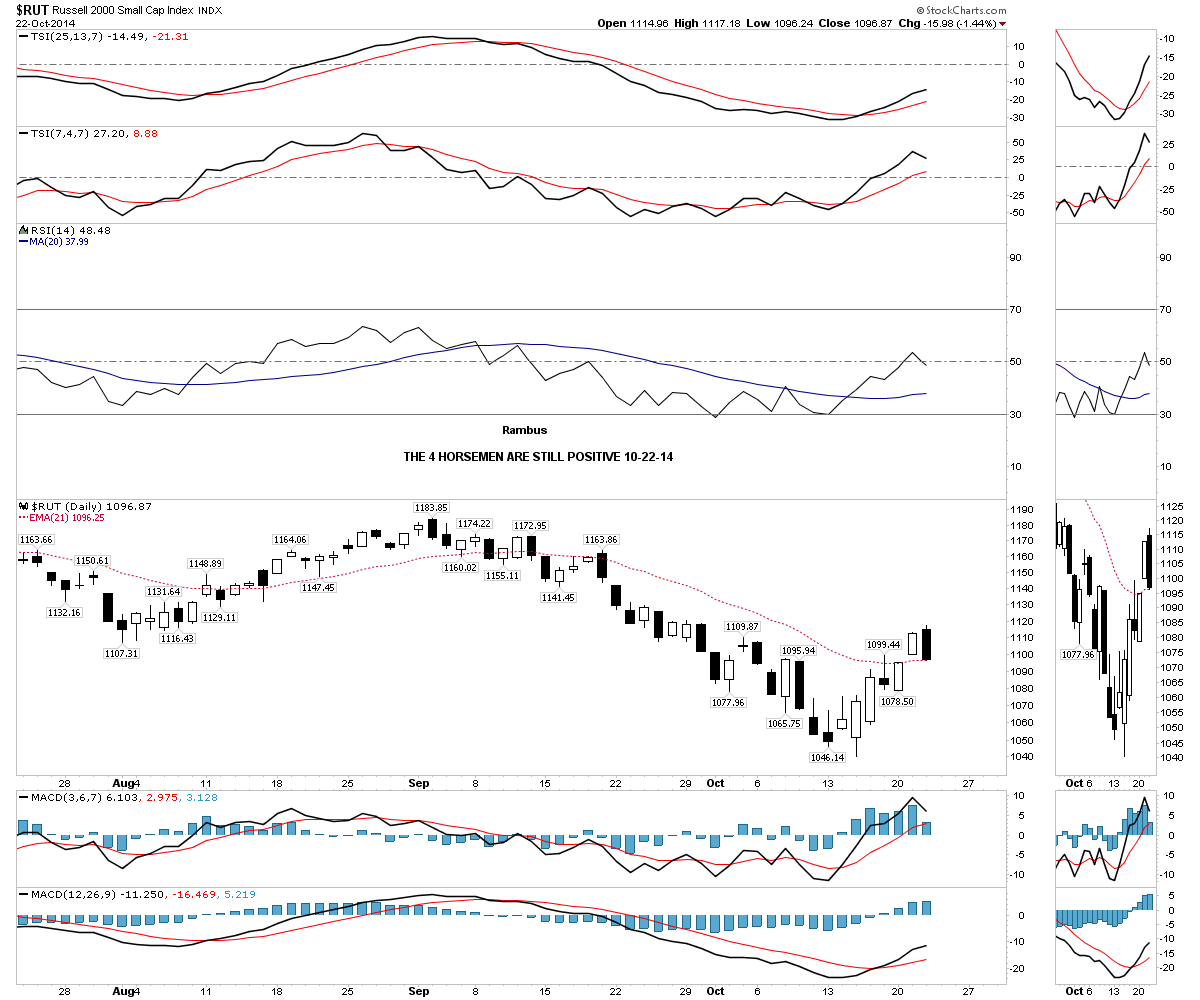
There is one more chart I would like to show, which is the NYSI Summation Index. Normally when the Summation Index gets down to the brown shaded area, a bottom is usually pretty close at hand. The exception occurs when the markets are in crash mode, such as during the 2009 decline. Many times you will see a double bottom where the SPX will make a lower low while the Summation Index will make a higher low, which is a positive divergence.
Our current correction has been the strongest one since the 2011 low. What I’m looking for is for the Summation Index to turn up first, which it has, and then for the MACD to crossover to the upside, which it has. The only question is, will we see a double bottom as seen in 2009, 2010 and 2011? Stay tuned as things are starting to get really interesting.
